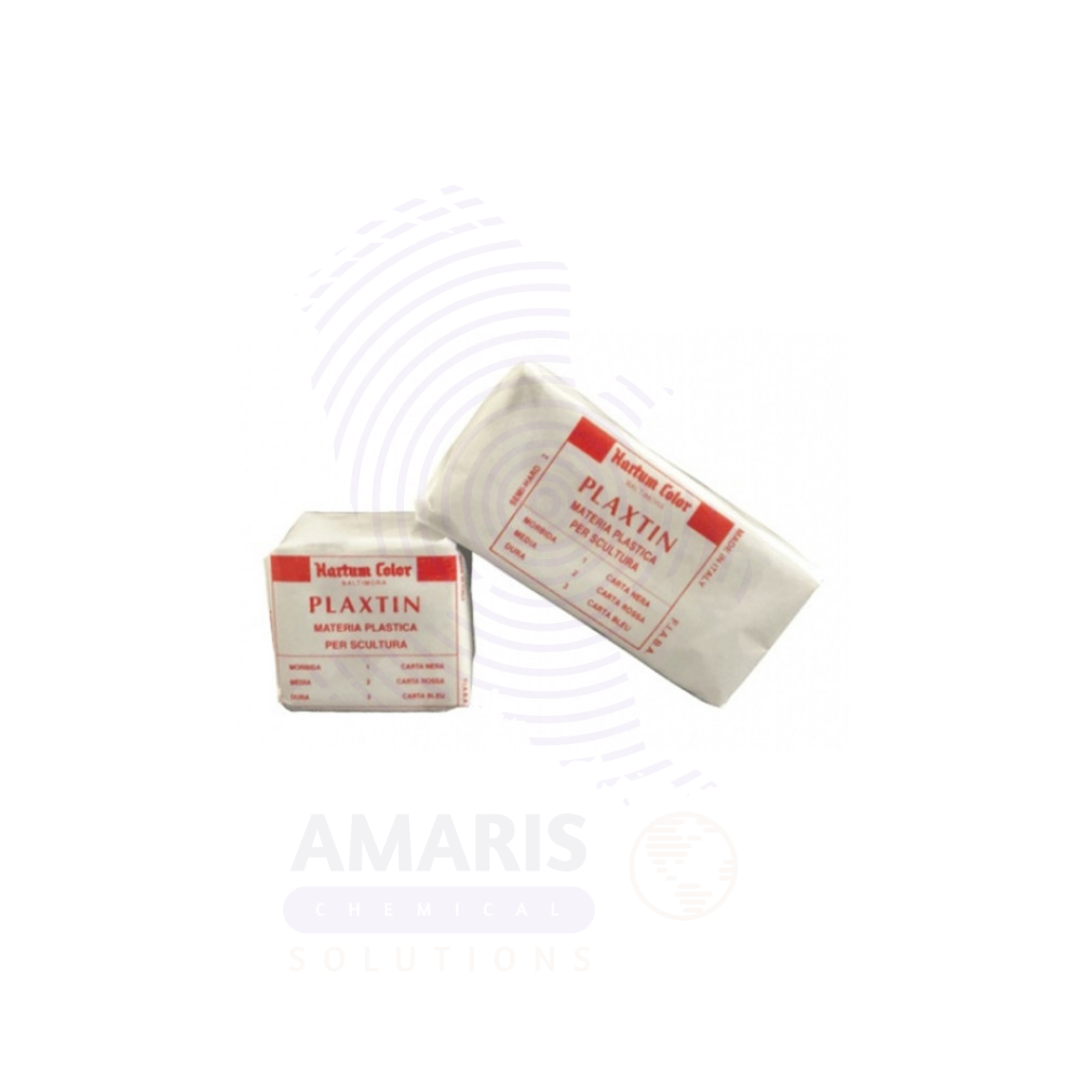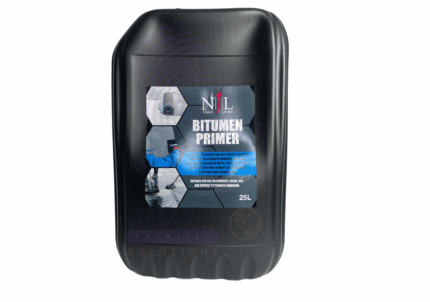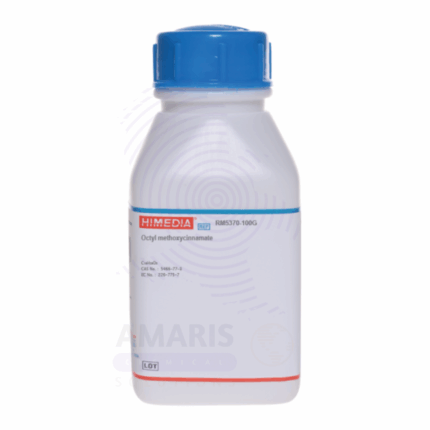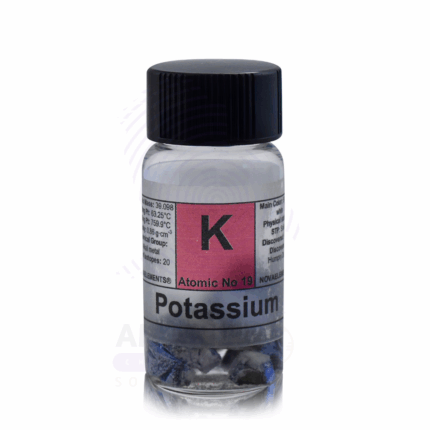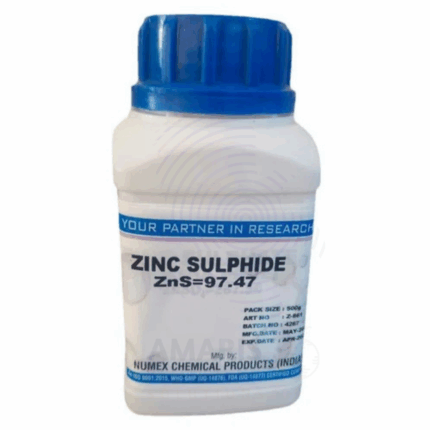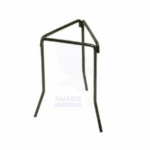

Plasticine Extra Pure
$ 17.00 Original price was: $ 17.00.$ 16.89Current price is: $ 16.89.
Plasticine Extra Pure is a soft, pliable, and non-drying modeling compound formulated for precision use in educational, artistic, and scientific applications. Unlike traditional clays, this extra pure grade contains high-quality, non-toxic ingredients that ensure safety, smooth texture, and ease of molding without hardening over time.
It is commonly used in schools, laboratories, design studios, and animation, offering excellent workability for crafting models, prototypes, or anatomical structures. Its stable composition allows repeated reuse without loss of quality, making it both economical and environmentally friendly.
Plasticine should be kept sealed in a cool, dust-free environment to preserve its flexibility. Although non-toxic, it should not be ingested, and basic hygiene should be practiced after handling, especially in laboratory or classroom settings.
Plasticine Extra Pure
PRIMARY USES
- Educational Tool: Used in schools to teach modeling, geometry, and motor skills.
- Art & Sculpture: Popular for sculpting, especially for detailed and repeatable forms.
- Animation Industry: Essential in stop-motion animation (e.g., claymation) due to its reusability and flexibility.
- Prototype Development: Utilized by designers and engineers for quick concept modeling.
- Medical & Dental Simulations: Used for anatomical modeling and procedure practice.
SECONDARY USES
- Forensic Applications: Captures shoe prints, tool marks, or bite marks during investigations.
- Temporary Lab Seals: Acts as a sealant or stabilizer in experimental setups.
- Moulding Base Material: Used to support objects while casting molds.
- Hobby & Craft Projects: Common in architectural modeling, gaming miniatures, and DIY projects.
- Shock Absorber: Used as padding or to prevent movement in fragile item packaging.
1. Basic Identification Attributes
- Chemical Name: Plasticine (Modeling Clay – Non-Drying)
- CAS Number: Mixture (typically does not have a single CAS number as it is a blend of substances)
- HS Code: 3407.00.00 (Modeling pastes, including those for children’s amusement)
- Molecular Formula: Not applicable – composed of a blend of hydrocarbons, waxes, oils, and fillers (e.g., calcium carbonate, stearates)
- Synonyms:
- Modeling clay
- Non-hardening clay
- Oil-based clay
- Non-drying sculpting medium
2. Physical & Chemical Properties
- Physical State: Solid (malleable paste)
- Color & Odor: Varies by formulation (can be colored); mild waxy odor
- Boiling Point & Melting Point:
- No distinct boiling point
- Softens at ~40–60 °C (melting varies by wax/oil content)
- Density/Specific Gravity: ~1.6–2.0 g/cm³
- Solubility:
- Insoluble in water
- Partially soluble in non-polar organic solvents (depends on wax/oil content)
- pH Level: Neutral
- Vapor Pressure & Volatility: Negligible
- Flash Point: >150 °C (depending on wax/oil content)
- Autoignition Temperature: >300 °C
- Viscosity: Not applicable (semi-solid paste)
3. Safety & Hazard Attributes
- Hazard Class (GHS Classification):
- Not classified as hazardous
- Non-toxic under normal use
- NFPA Ratings:
- Health: 0
- Flammability: 1
- Reactivity: 0
- Exposure Limits:
- No OSHA/ACGIH limits; general ventilation sufficient
- Reactivity:
- Stable under normal conditions
- Avoid open flame/high heat
4. Storage & Handling Attributes
- Storage Conditions:
- Store at room temperature
- Keep sealed to prevent contamination
- Incompatible Materials:
- Strong oxidizing agents
- Container Type: Plastic containers or resealable bags
- Shelf Life & Expiration Date: Indefinite if stored properly
- Special Handling Requirements:
- Minimal PPE required; wash hands after handling
- Avoid ingestion or prolonged contact with sensitive skin
5. Regulatory & Compliance Attributes
- Regulatory Status:
- Complies with general safety standards for modeling compounds
- Not regulated under EPA, REACH, DOT for normal use
- Transportation Restrictions:
- Not regulated as hazardous material
- Waste Disposal Method:
- Dispose of as non-hazardous waste
- Can be landfilled or incinerated per local guidelines
6. Environmental & Health Impact
- Ecotoxicity:
- Low risk; inert and non-toxic
- Persistence in Environment:
- Not biodegradable; physically stable
- Carcinogenicity/Mutagenicity:
- Not classified as carcinogenic
- Biodegradability:
- Not biodegradable; considered environmentally inert
SAFETY PRECAUTIONS
Personal Protective Equipment (PPE):
- Wear gloves to prevent skin irritation from prolonged contact.
- Use safety goggles if cutting or reshaping generates particles.
- No respiratory protection is generally required, but avoid inhaling any dust from dried particles.
Handling:
- Handle with clean hands or tools.
- Avoid contaminating the product with foreign materials.
- Do not ingest.
- Wash hands thoroughly after use.
Storage:
- Store in a cool, dry place away from direct sunlight.
- Keep the container tightly closed when not in use.
- Avoid extreme temperatures, which may affect pliability or composition.
FIRST AID MEASURES
Inhalation:
- Not typically hazardous by inhalation.
- If irritation occurs, move to fresh air and seek medical attention if symptoms persist.
Skin Contact:
- Wash the exposed area with soap and water.
- Discontinue use if skin irritation or sensitivity develops.
Eye Contact:
- Rinse thoroughly with clean water for several minutes.
- Remove contact lenses if present and easy to do.
- Seek medical attention if irritation continues.
Ingestion:
- Rinse mouth with water.
- Do not induce vomiting.
- Seek medical attention, especially if large amounts are swallowed.
FIRE FIGHTING MEASURES
Flammability:
- Generally non-flammable under normal conditions, but may burn at high temperatures.
Extinguishing Media:
- Use water spray, dry chemical, carbon dioxide, or foam.
Hazardous Combustion Products:
- May release carbon monoxide, carbon dioxide, and possibly other organic vapors if burned.
Firefighter Protection:
- Use self-contained breathing apparatus (SCBA) and protective clothing.
- Avoid inhalation of smoke or combustion fumes.


 Preservatives(food)
Preservatives(food) Flavor Enhancers
Flavor Enhancers Acidulants
Acidulants Sweeteners
Sweeteners Antioxidants
Antioxidants Colorants(food)
Colorants(food) Nutraceutical Ingredients (food)
Nutraceutical Ingredients (food) Nutrient Supplements
Nutrient Supplements Emulsifiers
Emulsifiers
 Collectors
Collectors Dust Suppressants
Dust Suppressants Explosives and Blasting Agents
Explosives and Blasting Agents Flocculants and Coagulants
Flocculants and Coagulants Frothers
Frothers Leaching Agents
Leaching Agents pH Modifiers
pH Modifiers Precious Metal Extraction Agents
Precious Metal Extraction Agents
 Antioxidants(plastic)
Antioxidants(plastic) Colorants (Pigments, Dyes)
Colorants (Pigments, Dyes) Fillers and Reinforcements
Fillers and Reinforcements Flame Retardants
Flame Retardants Monomers
Monomers Plasticizers
Plasticizers Polymerization Initiators
Polymerization Initiators Stabilizers (UV, Heat)
Stabilizers (UV, Heat)
 Antifoaming Agents
Antifoaming Agents Chelating Agents
Chelating Agents Coagulants and Flocculants
Coagulants and Flocculants Corrosion Inhibitors
Corrosion Inhibitors Disinfectants and Biocides
Disinfectants and Biocides Oxidizing Agents
Oxidizing Agents pH Adjusters
pH Adjusters Scale Inhibitors( water)
Scale Inhibitors( water)
 Antioxidants(cosmetic)
Antioxidants(cosmetic) Emollients
Emollients Fragrances and Essential Oils
Fragrances and Essential Oils Humectants
Humectants Preservatives
Preservatives Surfactants(cosmetic)
Surfactants(cosmetic) Thickeners
Thickeners UV Filters
UV Filters
 Fertilizers
Fertilizers Soil Conditioners
Soil Conditioners Plant Growth Regulators
Plant Growth Regulators Animal Feed Additives
Animal Feed Additives Biostimulants
Biostimulants Pesticides (Herbicides, Insecticides, Fungicides)
Pesticides (Herbicides, Insecticides, Fungicides)
 Active Pharmaceutical Ingredients (APIs)
Active Pharmaceutical Ingredients (APIs) Excipients
Excipients Solvents(pharmaceutical)
Solvents(pharmaceutical) Antibiotics
Antibiotics Antiseptics and Disinfectants
Antiseptics and Disinfectants Vaccine Adjuvants
Vaccine Adjuvants Nutraceutical Ingredients (pharmaceutical)
Nutraceutical Ingredients (pharmaceutical) Analgesics & Antipyretics
Analgesics & Antipyretics
 Analytical Reagents
Analytical Reagents Solvents(lab)
Solvents(lab) Chromatography Chemicals
Chromatography Chemicals Spectroscopy Reagents
Spectroscopy Reagents microbiology-and-cell-culture-reagents
microbiology-and-cell-culture-reagents Molecular Biology Reagents
Molecular Biology Reagents Biochemical Reagents
Biochemical Reagents Inorganic and Organic Standards
Inorganic and Organic Standards Laboratory Safety Chemicals
Laboratory Safety Chemicals Specialty Laboratory Chemicals(Special Laboratory Equipment)
Specialty Laboratory Chemicals(Special Laboratory Equipment)
 Demulsifiers
Demulsifiers Hydraulic Fracturing Fluids
Hydraulic Fracturing Fluids Scale Inhibitors(oil)
Scale Inhibitors(oil) Surfactants(oil)
Surfactants(oil) Drilling Fluids
Drilling Fluids
 Dyes and Pigments
Dyes and Pigments Bleaching Agents
Bleaching Agents Softening Agents
Softening Agents Finishing Agents
Finishing Agents Antistatic Agents
Antistatic Agents
 Admixtures
Admixtures Waterproofing Agents
Waterproofing Agents Sealants and Adhesives
Sealants and Adhesives Curing Compounds
Curing Compounds Concrete Repair Chemicals
Concrete Repair Chemicals Anti-Corrosion Coatings
Anti-Corrosion Coatings
 Surfactants(cleaning)
Surfactants(cleaning) Builders
Builders Enzymes
Enzymes Solvents (Cleaning)
Solvents (Cleaning) Fragrances
Fragrances
 Electronic Chemicals
Electronic Chemicals Catalysts
Catalysts Lubricants
Lubricants Photographic Chemicals
Photographic Chemicals Refrigerants
Refrigerants Automotive chemicals
Automotive chemicals Pyrotechnic Chemicals
Pyrotechnic Chemicals
 Biodegradable Surfactants
Biodegradable Surfactants Bio-based Solvents
Bio-based Solvents Renewable Polymers
Renewable Polymers Carbon Capture Chemicals
Carbon Capture Chemicals Wastewater Treatment Chemicals
Wastewater Treatment Chemicals
 Pigments
Pigments Solvents(paint)
Solvents(paint) Specialty Coatings
Specialty Coatings Binders/Resins
Binders/Resins Additives
Additives Driers
Driers Anti-Corrosion Agents
Anti-Corrosion Agents Functional Coatings
Functional Coatings Application-Specific Coatings
Application-Specific Coatings
 Fresh Herbs
Fresh Herbs Ground Spices
Ground Spices Whole Spices
Whole Spices Spice Blends
Spice Blends Dried Herbs
Dried Herbs
 Leavening Agents
Leavening Agents Dough Conditioners
Dough Conditioners Flour Treatments
Flour Treatments Fat Replacers
Fat Replacers Decoratives
Decoratives Preservatives(baking)
Preservatives(baking)
 Plasticizers & Softeners
Plasticizers & Softeners Reinforcing Agents
Reinforcing Agents Adhesion Promoters
Adhesion Promoters Vulcanizing Agents
Vulcanizing Agents Antidegradants
Antidegradants Blowing Agents
Blowing Agents Fillers & Extenders
Fillers & Extenders Accelerators & Retarders
Accelerators & Retarders